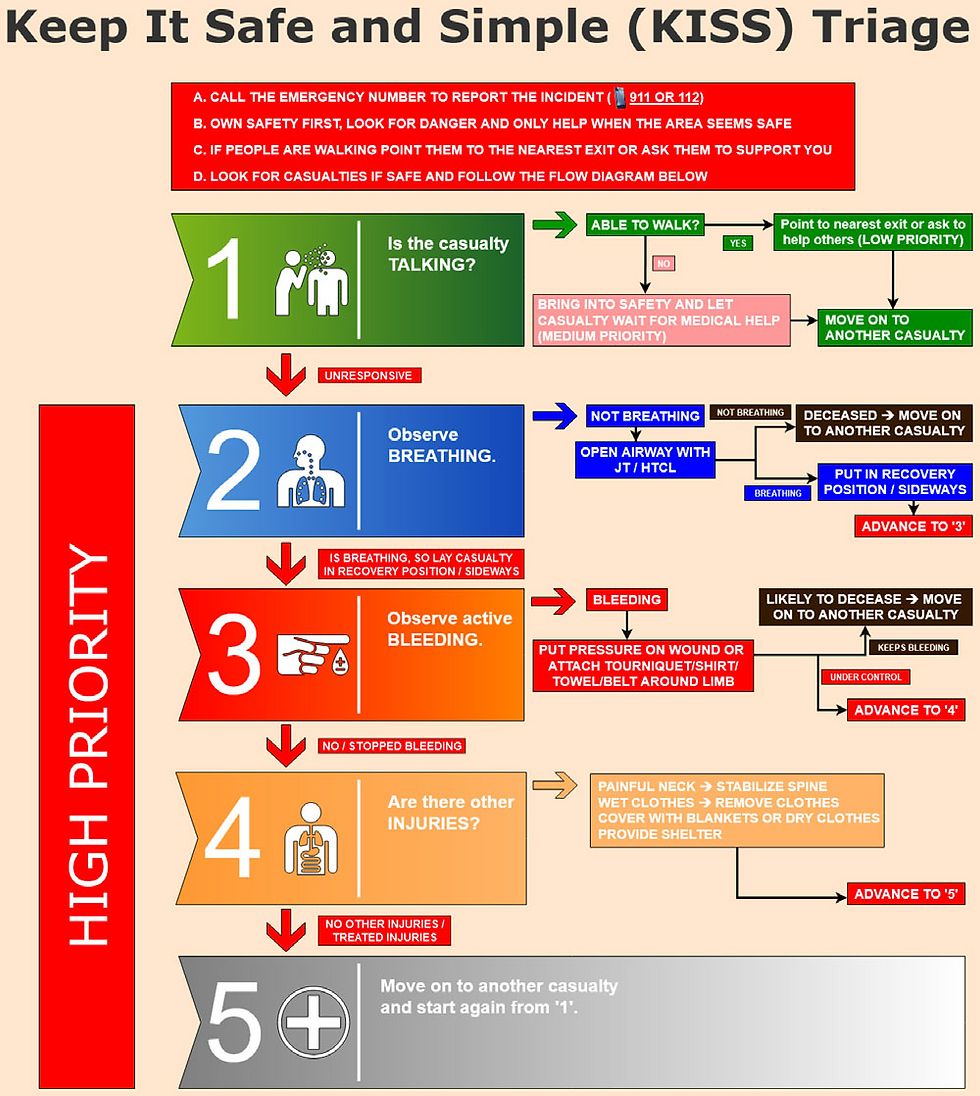Disaster triage - could any bystander could do it?
- Jared Bly
- Jun 11, 2021
- 2 min read
Updated: Aug 23, 2023
Jetten WD, Seesink J, Klimek M. Prehospital Triage by Lay Person First Responders: A Scoping Review and Proposal for a new Prehospital Triage Tool. Disaster Medicine and Public Health Preparedness. Cambridge University Press; 2021:1–11.

Context: Prehospital disaster triage, prehospital tools and those that can be used by untrained people on scene before assistance arrives.
Methods: Two parts: 1. An online scoping review of prehospital tools, looking specifically at those four that can be used by lay persons ('LPFR's' - 'lay person first responders'). 2. Development of the KISS (Keep it Safe and Simple) tool specifically for use by LPFR's describing step-by-step assessment of scene safety, then patients (walking, talking, breathing, bleeding, and other injuries).

Conclusion: There is untapped potential in prehospital triage by lay persons in multi-casualty incidents. There is little relevant research. The research that has been done indicates that triage tools in this scenario are feasible. "These results
implicate that the prehospital triage tool for lay people first
responders could be useful and contributing to help
medical first responders to determine faster who most urgently
needs help in a MCI."
We talk about disaster triage, which for most of us starts at the hospital doors. And we’re taught how wrong self-triage is -- the walking (running, maybe even) wounded coming first, then the really sick ones arriving only after hospital resources are already overwhelmed (1). The importance of triage is clear, called a "keystone" (2) and "the most important" (3) in disaster medical response. The problem is that all our training is of little use if we don't happen to be near enough to take control of the natural mistriage that is supposed to occur.
The KISS tool was developed by the authors of this study following the principles in the prehospital tools reviewed. Though the focus was on those studies that could be used by LPFR’s, this paper would be a great jumping-off point for a closer look at prehospital triage tools (ie EMS) as they summarized those in search for nonprofessional tools. The reality of most disasters is that much triage occurs prior to anyone trained in the principles of any type of medical triage arrives. This paper offers an attractive, simple (as implied by the name), and useful disaster first aid tool for training and practical use before the professionals arrive.
References
Hogan DE, Burstein JL. Basic physics of disaster. In Hogan DE, Burstein JL, editors. Disaster medicine. Lippincott Williams & Wilkins; 2007. pp 3-9)
Hogan DE, Lairet J. Triage. In Hogan DE, Burstein JL, editors. Disaster medicine. Lippincott Williams & Wilkins; 2007. pp 10-15.
Sztajnkrycer MD, Madsen BE, Alejandro Báez A. Unstable ethical plateaus and disaster triage. In Kollek D, editor. Disaster preparedness for health care facilities. PMPH-USA; 2013.






















Comments